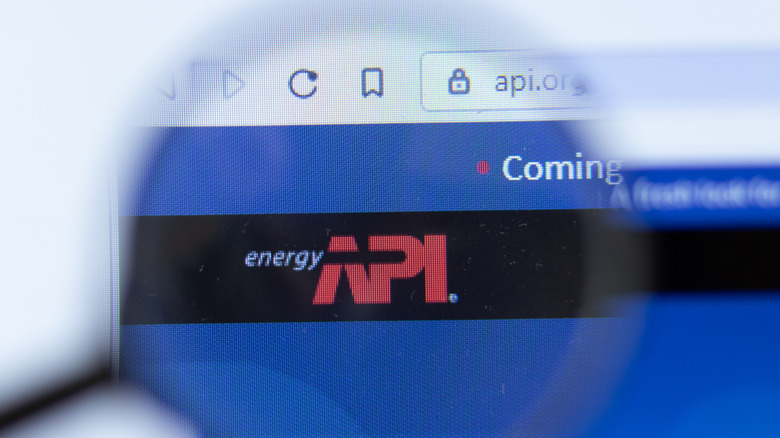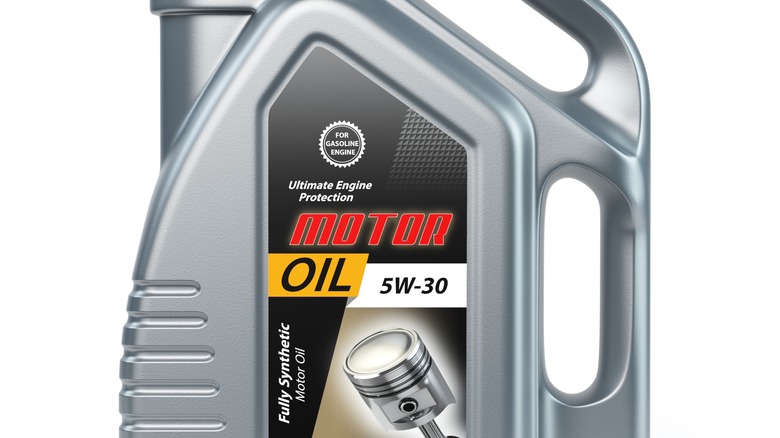What Does The API Symbol Mean On A Motor Oil Container?
If you've ever bought a quart of motor oil for your vehicle, you've likely encountered the letters API somewhere on the label. In fairness, there are a lot of abbreviations, symbols and odd number combinations on a motor oil label, so you might have missed it.
Engines, including those used in automobiles, motorcycles, and equipment, often require the use of motor oil, set apart by various classifications, that meet a prescribed set of standards. The broadest classification typically requires the use of motor oils that adhere to standards set by the API – that is, the American Petroleum Institute.
The API says it was formed in 1919 to set standards for the burgeoning oil industry. Today, it represents America's oil and natural gas industry, which provides over 11 million jobs in the United States and supplies most of the nation's industry.
API standards not only apply to conventional and synthetic engine oils, but synthetic blends as well. In addition to the oil type, you'll want to pay attention to the API service category and viscosity ratings shown on the labels of even the best motor oil brands before pouring them into your engine.
What do the abbreviations, numbers, and letters mean on an oil container?
In the past, the API service category was more complicated than it is today. Service ratings ensure motor oils meet standardized requirements for the prevention of engine component corrosion and wear, viscosity, foaming, and flashpoint, among other criteria. Older service category ratings were designated by letters ranging from SH to SN, but these have been superseded by Service Category SP motor oil for engines made in 2020 and later.
Another criterion for choosing a motor oil for your engine is the oil's weight or viscosity. Motor oil typically gets thicker, more viscous, when the temperatures are colder and thinner, or less viscous, when it gets warmer. This meant that single-viscosity-grade motor oils, identified by the Society of Automotive Engineers' classifications such as 10W or 30W, were selected for use in vehicles depending on prevailing temperatures. While 30W was often a fine choice for summer months across much of the United States, it was a poor choice for cold weather start-ups on cold winter mornings in all but the most tropical states.
Most modern automobile engines use multi-grade motor oil, which satisfies SAE viscosity requirements over a broader range of temperatures. They're easily identified by the numbering scheme on their containers which include a W preceding a dash, such as 0W-40, 5W-20, and 10W-30.

